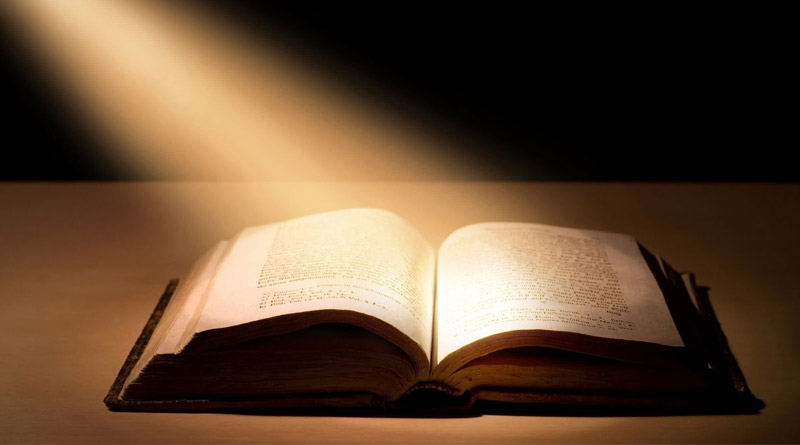Books of the Bible (2) – Exodus
Journey to Freedom
This series reviews some of the key books in the Bible and describes what they have to say and what lessons we can learn. It is designed to encourage you to read the Bible for yourself. If you do that each month in a structured way, you will have read a large part of the Bible by the end of the year.
The end of the Book of Genesis explains how the descendants of Jacob took refuge in Egypt during a great famine, but they stayed on long after the famine was over.
Slaves in Egypt
Joseph, their protector, died, and there was a change of government. Soon their growing numbers threatened the balance of population, and the Egyptian king decided on a primitive form of birth control, getting rid of all male children that were born. When this did not work, he enslaved the Israelites and used them on huge building projects as free labour.
All this had been predicted in a prophecy that God made to Abraham hundreds of years previously when he had been told:
Know certainly that your descendants will be strangers in a land that is not theirs, and will serve them, and they will afflict them four hundred years. And also the nation whom they serve I will judge; afterward they shall come out with great possessions(Genesis 15:13,14)
God’s Escape Plan
The last part of that prophecy was now about to come true for the Book of Exodus explains how God delivered Abraham’s people from bondage and began to take them back to the land their forefathers had come from. The early chapters describe the amazing story of Moses. This man, the chosen deliverer, was born in a slave camp, yet was brought up as the son of a princess. Exiled for forty years in Midian where he became a shepherd, he was commissioned by the angel of God at the burning bush to go back to Egypt deliver the Israelites from the grip of the Egyptians. He was to shepherd them out, but how would he persuade the Egyptians to let God’s people go?
God’s solution was to bring Ten Plagues or disasters to persuade the Egyptian people to release their slaves. Those plagues grew in intensity as the stubborn Pharaoh refused to humble himself before Israel’s God. The account makes gripping reading in Exodus chapters 7 to 12. The last plague has a significance that lasts until today. It involved the death of a firstborn child in each Egyptian family and the deliverance of the Israelites who were protected by the sprinkled blood of the Passover lamb on their doors.
That historic event is still commemorated annually by Jews all over the world while the New Testament explains that Jesus is the Passover lamb and that he shed his blood on the cross to deliver all of us from the power of death, to which we are enslaved by sin.
Red Sea Crossing
Once out of Egypt and making a bid for freedom, God’s people were still not out of trouble. Pharaoh changed his mind and tried to get his slaves back, charging after them with his army of charioteers. He caught up with them on the shores of the Red Sea where Moses urged the people to believe in God’s salvation, and for once they did (Hebrews 11:29). The waters parted and the people crossed and their deliverance from slavery was complete. Exodus chapter 14 describes this amazing escape from death and the New Testament explains that when believers are baptised it is as if they cross the red Sea to begin a new life (1 Corinthians 10:1-4).
On the other side of the Red Sea life was tough and the Israelites began a long journey that would slowly weld them into a nation. They spent a whole year at the foot of Mount Sinai in the Negev desert. Their food was provided each day in the form of manna, a complete diet in granular form that fell around the camp each night. In addition, abundant water came from a rock, which Moses was told to strike with his shepherd’s rod.
Later, in the gospel of John, Jesus likened himself to this miraculous bread from heaven, and to the smitten rock, which gave the water of life (see John 6:32-35 and 7:37-38).
Ten Commandments
Two important things happened in this period. First, as recorded in Exodus chapters 19 to 24, the Israelites agreed to obey the laws and statutes summarised in the Ten Commandments. In return, God promised He would be their God. This solemn agreement, known in the Bible as a Covenant, was sealed after the custom of the times by the sprinkling of blood. Sadly, their early enthusiasm to serve their God was marred by a lapse into the worship of a Golden Calf (see chapter 32) while Moses was away. This was only one of their many rebellions against the God who had given them freedom and hope.
Second, Moses delivered to them very detailed instructions for constructing a portable Tabernacle (tent) fenced in by curtains, in which God would be worshipped through the chosen priests from the tribe of Levi. This was constructed from materials donated by the people themselves. The description is given in chapters 35 to 40.
At the heart of the Tabernacle were two rooms. The outer one had a golden lampstand, a table with bread and wine, and an altar for incense. The inner sanctuary contained only the Ark. This was a golden box containing the Ten Commandments. It was topped with a solid gold lid on which were fashioned cherubims (symbolic creatures with wings) over which the glory of God shone in a fiery cloud to indicate His presence in the midst of His people. The record of the wilderness journey continues in the book of Numbers which we’ll look at next.

